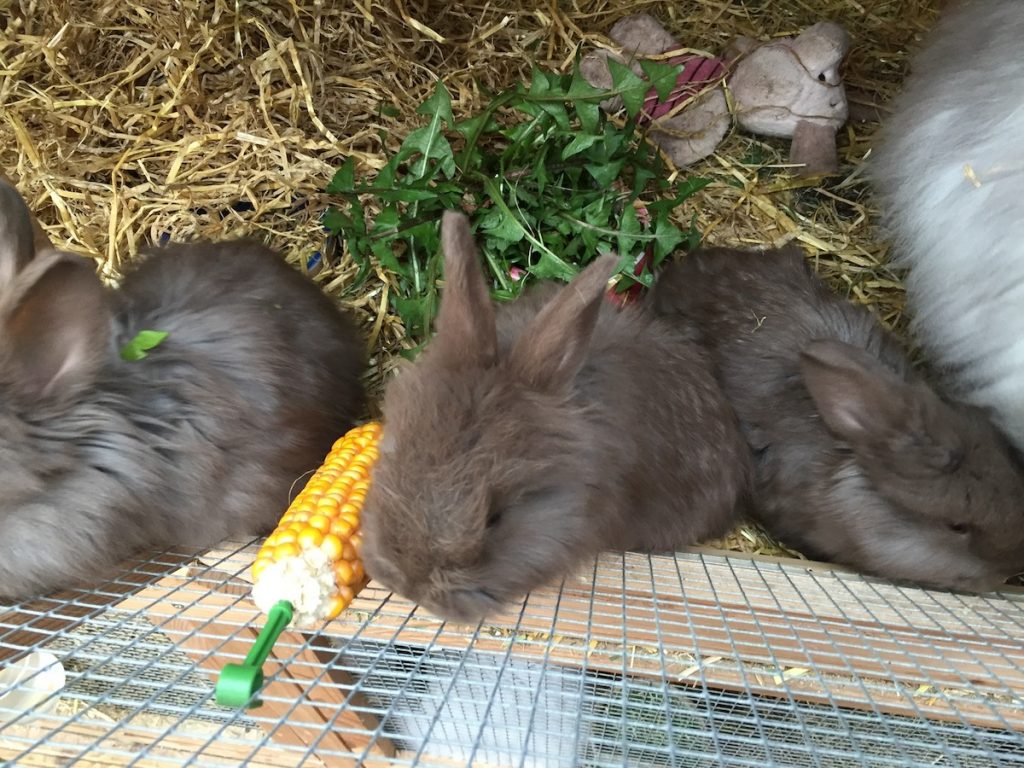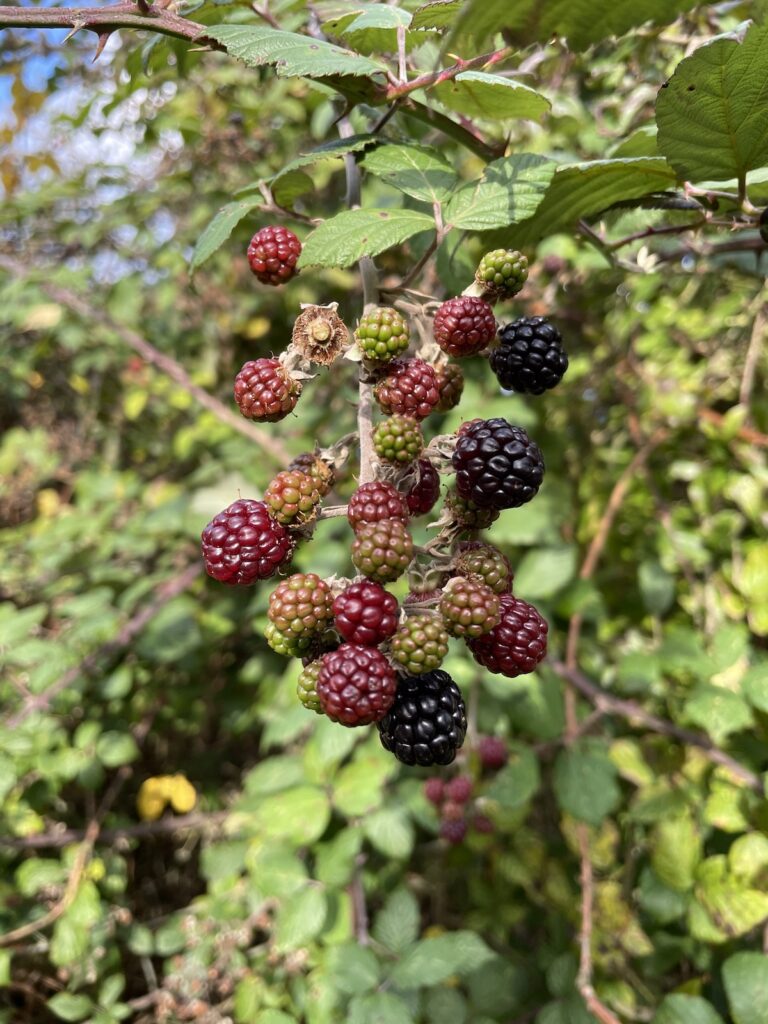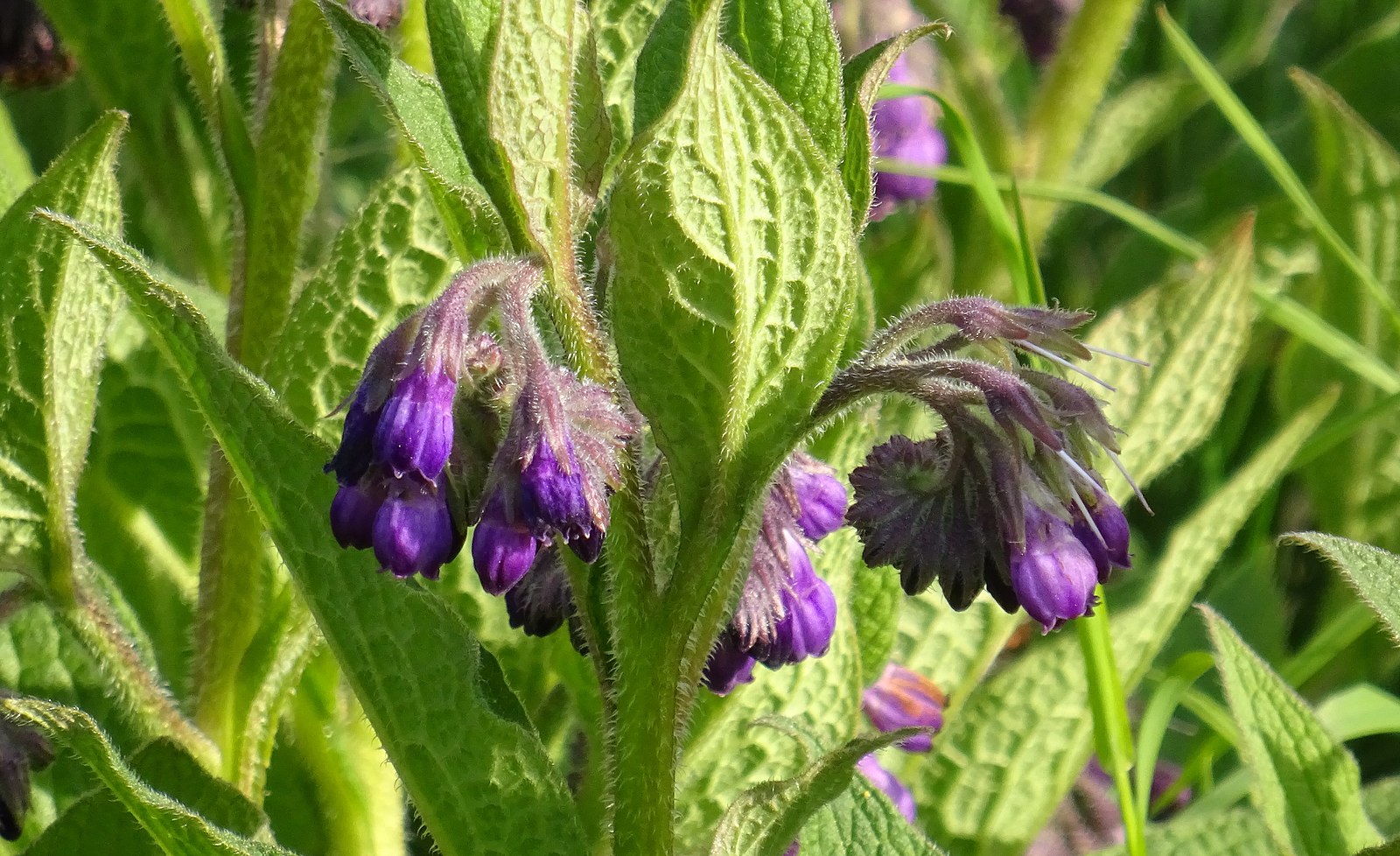
All plants of the earth are specially for feeding of the animals of the universe, and as rabbits are a part of this animal kingdom the main feed of the rabbit is herb’s or in winter bark of trees. Because we have chosen to make pets of rabbits the feeding habits should not change to suit our way of feeding, so rabbits will exist on herb’s and garden plants, without recourse to pellets and water. In fact rabbits fed on green food need not be given water in any circumstances. My rabbits have never seen water. (Article from the 1998 Year Book).

Avens (Geum) is a plant that is very common all over the country, and can be found in hedgerows and meadows, grows from 6” – 2′ according to conditions, flowers yellow, four petals and normally blooms around June and July.

Agrimony is another June and July bloomer with yellow flowers on a tall central stalk in small bunches. Both have serrated edges to the leaves, both are astringents.

Blackberry Brambles – too common to describe

Burnet blooms July to September, very common, found in all parts of the British Isles, flowers are cylindrical on very long stalks, long narrow serrated leaves, smells of cucumber, crimson flowers, astringent.

Carrot wild or cultivated, in the wild state grows with profuse leaves, when bruised smells strongly of carrot, umbels of white flowers, July to September.

Hogweed or called in some countries , Cow Parsley, white flowers blooms June to September better in the young state, wonderful bulk feed, laxative.

Clovers very laxative use in mixture to save scours, better in mixture with grasses, all the clovers can be fed.

Comfrey another wonderful fee, large leaves purple flowers, can have white or pink in certain soils.

Coltsfoot flowers appear in early February, leaves follow later, heart shaped, flowers and leaves edible.

Cleavers or goose grass flowers white July and August.
Chickweed a very common weed of all good soil, very laxative.

Dandelion laxative, a very good feed.

Docks wonderful feed when young however it is bitter when in seed.

Geranium Robartnium commonly called Herb Robert, one of the original plants from which the garden geranium comes, astringent, pick flowers not unlike geranium a very good feed.

Storksbill is a similar plant with little prickly hairs up the stem, pink flowers astringent.

Ground Elder – a very common perennial herb shows very early in the year, leaves similar to parsnip, flowers white April – July
Groundsel a very good one to help out the moult.

Heathers are all very good to feed, wonderful for young rabbits can be fed without fear.

Hawkbit or Hawkweed very like dandelion, all are very good. Yellow flowers May to October.

Hedge Parsley one of the earliest and best of green foods can be found in the same place every year, nothing like the garden parsley which is also good, especially for getting does to mate, white flowers May – September.

Ivy easy to find only feed in the winter or early spring as the plant is not edible in the flowering or seeding stage.

Knotgrass – This is the weed of all grasslands also newly dug ground will be found in waste ground, tips, runs along the ground sometimes to 6-8 feet, flowers greenish white.
Shepherds Purse a very good herb used as a curative for the scours, will grow anywhere.

Sow Thistle- a very good laxative, can be fed alone all other nettles and thistles can be fed.

Trefoil a very large family of these all can be fed without fear, very like clovers, small flowers, yellow, creeping in habit, called all kinds of names in various countries, one very common name is silver weed, green top leaves which are silver on the underside.

Vetches a wonderful family of plants either fed green or as hay, very common to whatever they are growing near.

Watercress very common, very good, rabbits off food will often eat this especially if bruised, astringent and curative.

The most common ones have not as yet been mentioned, such as grasses, plantains, yarrows etc. All of these will be found in most lawns, so save all the mowings, if you have a large lawn, in fact you can put pens on the lawn and move them each day, this will be sufficient food, be careful to give the rabbit some shade and take them inside at night.

Article reproduced from the 1998 National Angora Club Year Book and majority of photographs used are links from Wikimedia Commons